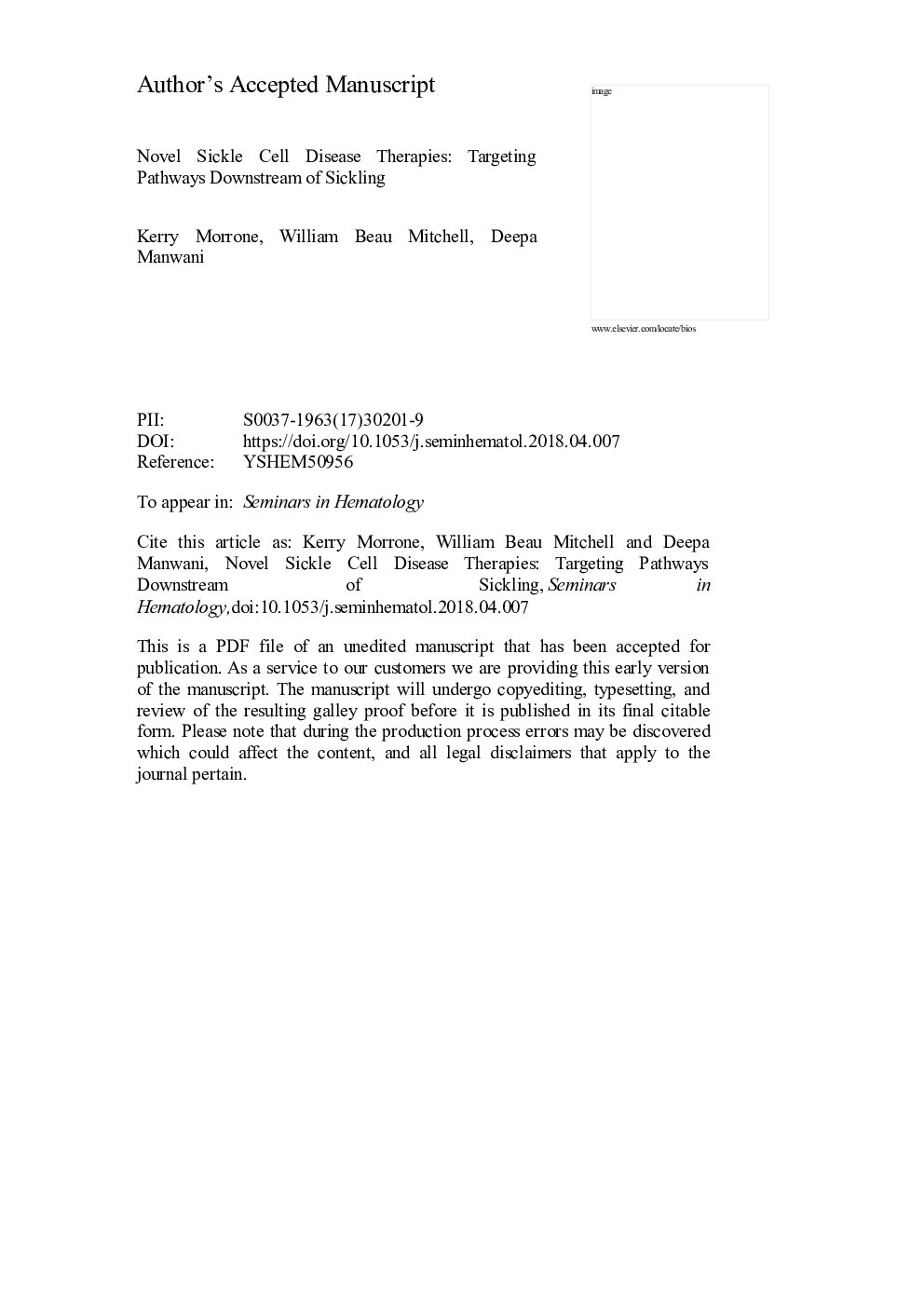| Article ID | Journal | Published Year | Pages | File Type |
|---|---|---|---|---|
| 8734789 | Seminars in Hematology | 2018 | 21 Pages |
Abstract
Sickle cell disease is an inherited hemoglobinopathy characterized by hemolytic anemia, frequent painful episodes, poor quality of life, end organ damage and a shortened lifespan. Although the seminal event is the polymerization of the abnormal hemoglobin, the downstream pathophysiology of vaso-occlusion results from heterotypic interactions between the altered, adhesive sickle cell RBCs, neutrophils, endothelium, and platelets. Ischemia reperfusion injury, hemolysis and oxidant damage all contribute to heightened inflammation and activation of the hemostatic system. These downstream targets are the focus of emerging treatments with considerable potential to ameliorate disease manifestations. This review summarizes the progress on development of these agents.
Related Topics
Health Sciences
Medicine and Dentistry
Hematology
Authors
Kerry Morrone, William Beau Mitchell, Deepa Manwani,
